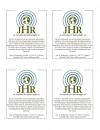Article #2 from Volume 1, Issue 1: Homelessness

“Homelessness as a Public Policy Problem”
Jacob Galfano
According to Senator Robert Cupp, “The goal of public policy is the greatest good for the largest number with protection for the rights of the minority.”
This philosophy – known as utilitarianism – is a contradiction, as “the greatest good” trumps the “rights of the minority” and many slip through the cracks. Government ought to check this by including civil society (consisting of advocacy groups, academic institutions, private foundations, the media, and religious organizations) in pluralistic decision-making processes.
In the
On Friday, February 9th, the City of
Although the City Council remains adamant that it is not ignoring
To date, church staff refuses to close down the encampment.
 Communities in
Communities in
The Seattle/King County Coalition for the Homeless conducted its annual One Night Count earlier this month – and found approximately “2,140 people trying to survive without housing or shelter throughout
“Due to its flaws, the One Night Count is not indicative of the actual number of homeless on the streets, as many cycle in and out of friends’ places or social service programs. It can reflect as little as two-thirds of the real population,” said Dr. Joshua Ginzler, clinical psychologist and research scientist at the
Whether rotating between churches or risking survival on the streets, the homeless need access to resources and support in order to address personal problems and cultivate a sense of human dignity.
“Housing should not be contingent upon conditions such as sobriety, when in fact it may well be the lack of housing that is maintaining the stress largely responsible for the substance use problems in the first place,” said Ginzler. “Housing First (DESC) provides housing so harm-reduction programs can be applied, which – we expect – lead to a lower overall cost to society.”
Because the problem of homelessness is complex and those impacted by it extend beyond the homeless per se, policy makers would be remiss to continue to push them to the periphery and ignore the input of a civil society dedicated to stable solutions.
Seattle/King County Coalition for the Homeless:
Housing First:
http://www.blogger.com/www.npr.org/news/specials/housingfirst







